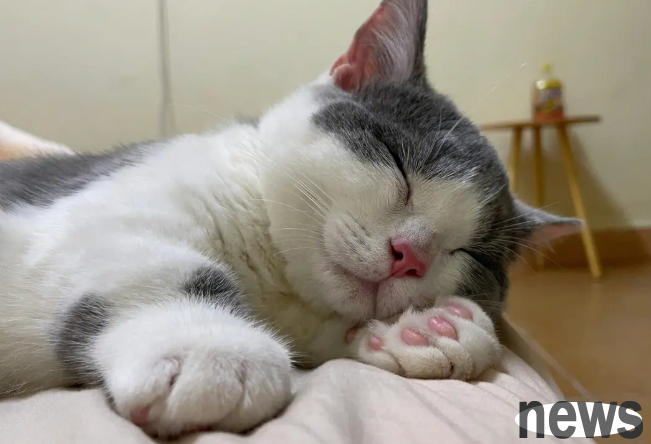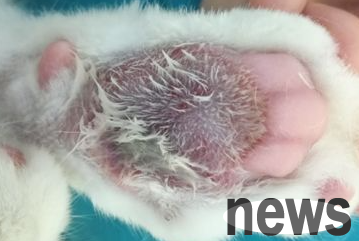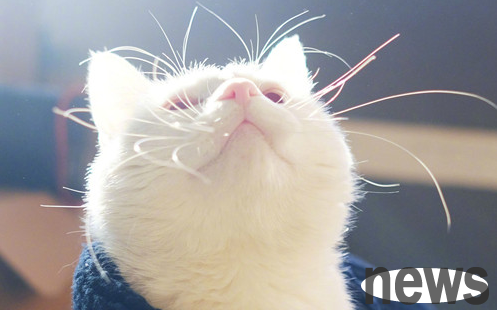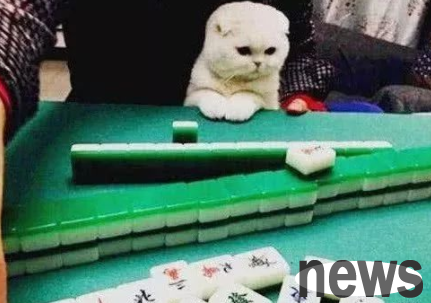What is calicivirus? How to treat cats with calicivirus?
Cat calicivirus is also called FCV. In fact, calicivirus infection is a common respiratory disease in cats. The most common symptom is sneezing. In addition, it may also be accompanied by symptoms such as drool, unstable walking, longer sleep time, and poor mental health. It mainly affects the cat's respiratory tract (nose and lungs), mouth (tongue ulcer), intestine and musculoskeletal system.

Cat cup shape is very contagious in kittens, especially for cats that have not been vaccinated, and the environment in which many cats live in poor ventilation is poor, so you need to pay attention! Once you find that the cat sneezes frequently, you must take it to the hospital for examination in time. There are at least 40 different FCV strains in calicivirus, which may cause different severity due to different strains!
How does calicivirus spread?
Cat calicivirus can be cured? What are the precautions for cup-positive cats?
·Spread by air
When cats sneeze, the virus can spread in the air through droplets. Although most of the droplets fall on the ground, the virus can survive on smiling dust particles or dander and last for several hours until it is inhaled by another host. After inhalation, it will cause serious damage to the respiratory tract.
· Contact with contaminated objects
is mostly found in multiple cat families. When they share a water basin or a food basin, they are prone to infection with viruses. Therefore, maintaining good hygiene habits is very important for the health of cats. Failure to clean the food bowl in time or not changing fresh cat food in time will also cause cats to suffer from this type of disease.
· Contact an infected cat
When a healthy cat is exposed to the infected cat's saliva, eyes, nose, or feces, it will also be easily infected! Especially in foster care, it is necessary to confirm whether there are good prevention and isolation measures at the sample delivery site to ensure that the cat is not affected by calicivirus.
What are the symptoms of calicovirus infection?
· Nasal secretions (transparent color may develop into pus)
· Sneezing
· Loss of appetite, dehydration
· Poor spirit, drooling
· Difficulty in chewing food, drooling
· Redness in the eyes (caused by secondary conjunctivitis)
· Oral ulcers
· Breathing louder, murmur, and difficulty
· Fever (heat in the ears, flesh pads)
· Acute upper respiratory tract infection
· Gingivitis, stomatitis
· Joint pain
· Pneumonia, hepatitis, pancreatitis (caused by very few viral mutations)
But many symptoms do not directly indicate whether the cat is infected with calicivirus, because it can be manifested in many different forms, each of which may be caused by other pathogens. For example, oral ulcers, feline herpes virus can also cause this phenomenon, although it is more rare than calicivirus.
Why can FCV be detected after being vaccinated?
Vaccination of FCV is important for cats, but it does not necessarily prevent FCV infection. They can only alleviate the severity of the disease. Vaccination can only control filtered toxin infection, but it cannot be used as the only tool to prevent the disease.
And some studies have shown that vaccines targeting respiratory viruses will weaken over time. Therefore, when the risk of infection is high, a shot can be re-injected to enhance the immune effect of the vaccine. How to treat calicivirus?

Calivirus is not completely cured. It is often complicated by secondary bacterial infections. Many people would recommend supportive treatment with antibiotics, but antibiotics originate from viruses and are only useful when secondary bacterial infections, do not work on the virus, and may cause cats to become anorexia, which will make the situation worse. Therefore, good care is important and can effectively help them reduce the severity of clinical symptoms.
· Use a wet towel to gently wipe their body, not touching the eyes and nose.
· Bring cats into the bathroom (non-shower), hot steam can help their noses provide moisture.
· Minimize the stress of cats when they are sick and stay away from other cats to prevent the spread of the virus.
· Because cats cannot smell the food clearly, try to eat heated food.
· Repeated disinfection of the food bowls, litter boxes, water bowls, etc. used by it.
· Before and after contacting other cats, you should thoroughly clean your hands to reduce the risk of disease transmission.
How to proactively prevent cat calicivirus infection?
· Disinfection air
Calicivirus in cats will be transmitted through the air because pathogens can survive on dust particles and dander for a long time, so we can use air purification systems to eliminate bacteria and viruses floating in the air. In addition, you can also ventilate frequently to maintain a good air quality in the home.
· Disinfection items
Regularly clean the water bowls, food bowls, cat nests and other items of cats and disinfect them. If there are multiple cats in the family, they need to be kept in quarantine.
· Avoid the addition of new members
If the indigenous people have been infected with calicivirus, adding a new cat will increase the chance of their disease recurrence. New members can cause strong stress, reduce the resistance of the indigenous people, and make it more susceptible to infection by the virus.




